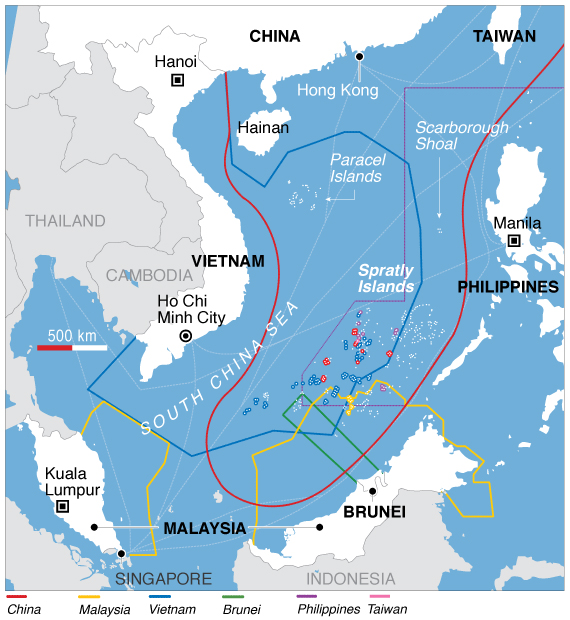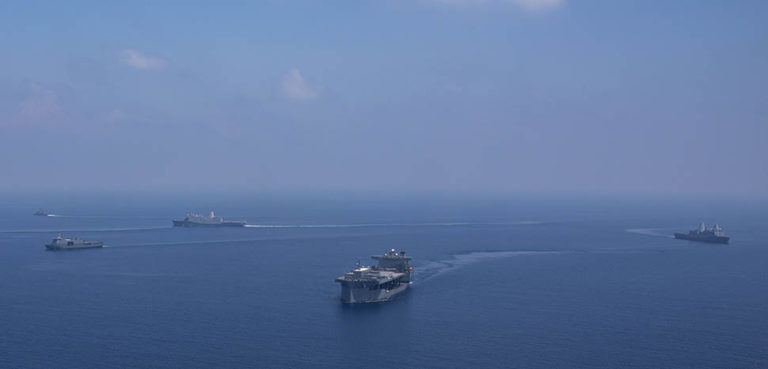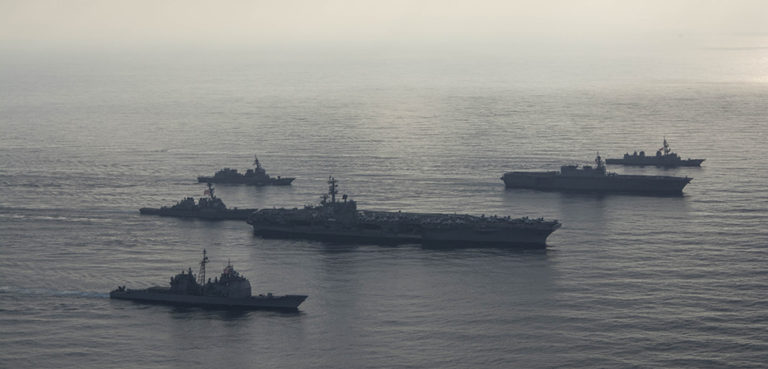South China Sea Background

The South China Sea territorial disputes involve a complex and ongoing conflict over sovereignty and control of the region’s islands, reefs, and waters, primarily among several Southeast Asian nations, including China, Vietnam, the Philippines, Malaysia, Brunei, and Taiwan. These disputes center around competing territorial claims and the rich natural resources, strategic waterways, and critical fishing grounds found in the South China Sea, which is also one of the world’s busiest maritime routes.
China asserts the most extensive claims in the South China Sea, marked by the so-called “nine-dash line,” which encircles nearly 90% of the sea and overlaps with the claims of other nations. Beijing’s stance is rooted in historical assertions of control, although these claims are widely disputed by its neighbors and have been rejected by a 2016 ruling by the Permanent Court of Arbitration in The Hague, which found no legal basis for China’s claims. Despite this, China has continued to reinforce its position through a series of military and civilian construction projects on various artificial islands and reefs, escalating tensions with other claimants.
The Philippines has been one of the most vocal opponents of China’s claims, particularly concerning the Scarborough Shoal and the Spratly Islands. In 2013, the Philippines brought a case against China to the Permanent Court of Arbitration, which led to the 2016 ruling in its favor. However, despite the legal victory, the Philippines has faced challenges in enforcing the ruling, as China has continued to assert its dominance in the region, including through the militarization of disputed features.
Vietnam also disputes China’s claims, especially regarding the Paracel Islands, which China has controlled since a brief military conflict with Vietnam in 1974. Tensions between the two countries have occasionally flared, particularly when Chinese oil exploration activities occur in waters claimed by Vietnam. Malaysia and Brunei have relatively smaller claims, focusing on areas near their coastlines, and while they have had disputes with China, they have generally pursued a more cautious diplomatic approach.
The South China Sea disputes have broader implications for international relations, particularly involving the United States, which conducts freedom of navigation operations in the region to challenge what it views as excessive maritime claims. These disputes have also drawn the attention of other global powers, raising concerns about potential conflicts and the need for a diplomatic resolution. Despite ongoing talks and regional dialogues, the South China Sea remains a flashpoint in East Asia, where competing national interests and strategic calculations continue to create tensions and uncertainty.










